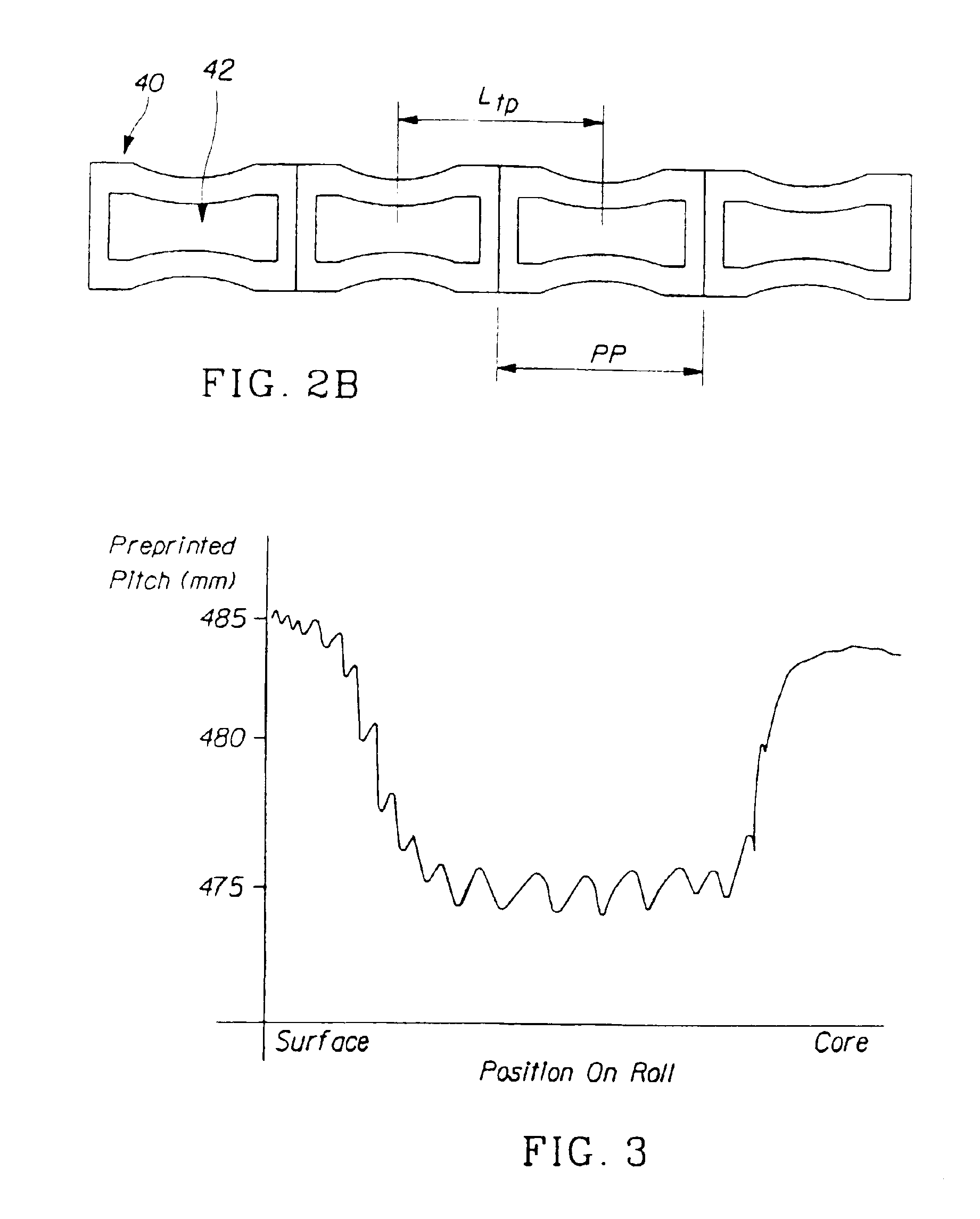Method and system for registering pre-produced webs with variable pitch length
a web and variable pitch technology, applied in the direction of process and machine control, mechanical control devices, instruments, etc., can solve the problems of mechanical instability of films, difficulty in correctly positioning pre-produced objects, and thermal shrinkage in the machine direction
- Summary
- Abstract
- Description
- Claims
- Application Information
AI Technical Summary
Benefits of technology
Problems solved by technology
Method used
Image
Examples
first embodiment
[0095
[0096]FIG. 5A shows a schematic diagram of the process of the first embodiment of registering the pre-produced web of the present invention. In the first embodiment, the registration system is a feedback control system requiring a comparison of an actual position of the pre-produced object 22 on the controlled web 30 to a target object position in relation to the finished product or the pitched unit operation 50. The controlled web 30 is initially fed at a velocity Vo, by a metering point 30b. The actual position data is provided by detection of the position of a pre-produced object 22 on the controlled web 30 moving in the machine direction MD, can occur automatically at a pre-produced object detection stage 33 via a sensor 34 which electronically strobes a resolver 50a providing actual position data 50b of the pre-produced object 22 (see FIG. 6A). A target position constant 44 (FIG. 6A) of the pre-produced object 22 is provided by an operator, which is a desired position valu...
second embodiment
[0107
[0108]The second embodiment of the present invention is the preferred embodiment of the registration control system of the present invention and is shown in FIGS. 5B and 6A. In the second embodiment, the registration control can be provided by the use of a feedforward control method.
[0109]FIG. 5B shows a schematic diagram of the process of the second embodiment of registering the pre-produced web of the present invention. In the second embodiment, the registration system is a feedback control system requiring a comparison of an actual position of the pre-produced object 22 on the controlled web 30 to a target object position in relation to the finished product or the pitched unit operation 50. The controlled web 30 is initially fed at a velocity Vo, by a metering point 30b, and the target web 40 is fed to the combining pitched unit operation 50 at a velocity Vt. The actual position data is provided by detection of the position of a pre-produced object 22 of the controlled web 3...
third embodiment
[0124
[0125]In a third embodiment of the present invention, shown in FIGS. 5C and 6B, the registration control can be provided by use of a machine vision system capable of capturing a pre-produced object 22 in a form of an image.
[0126]FIG. 5C shows a schematic diagram of the process of the third embodiment of registering the pre-produced web of the present invention. In the third embodiment, the registration system is a feedback control system requiring a comparison of an actual position of the pre-produced object 22 on the controlled web 30 to a target object position in relation to the finished product or the pitched unit operation 50. The controlled web 30 is initially fed at a velocity Vo, by a metering point 30b, the target web 40 is fed to the combining pitched unit operation 50 at a velocity Vt. The actual position data is provided is by detection of the position of the pre-produced object 22 of the controlled web 30 moving in the machine direction MD occurs at a pre-produced ...
PUM
| Property | Measurement | Unit |
|---|---|---|
| Ratio | aaaaa | aaaaa |
| Tension | aaaaa | aaaaa |
| Velocity | aaaaa | aaaaa |
Abstract
Description
Claims
Application Information
 Login to View More
Login to View More - R&D
- Intellectual Property
- Life Sciences
- Materials
- Tech Scout
- Unparalleled Data Quality
- Higher Quality Content
- 60% Fewer Hallucinations
Browse by: Latest US Patents, China's latest patents, Technical Efficacy Thesaurus, Application Domain, Technology Topic, Popular Technical Reports.
© 2025 PatSnap. All rights reserved.Legal|Privacy policy|Modern Slavery Act Transparency Statement|Sitemap|About US| Contact US: help@patsnap.com



